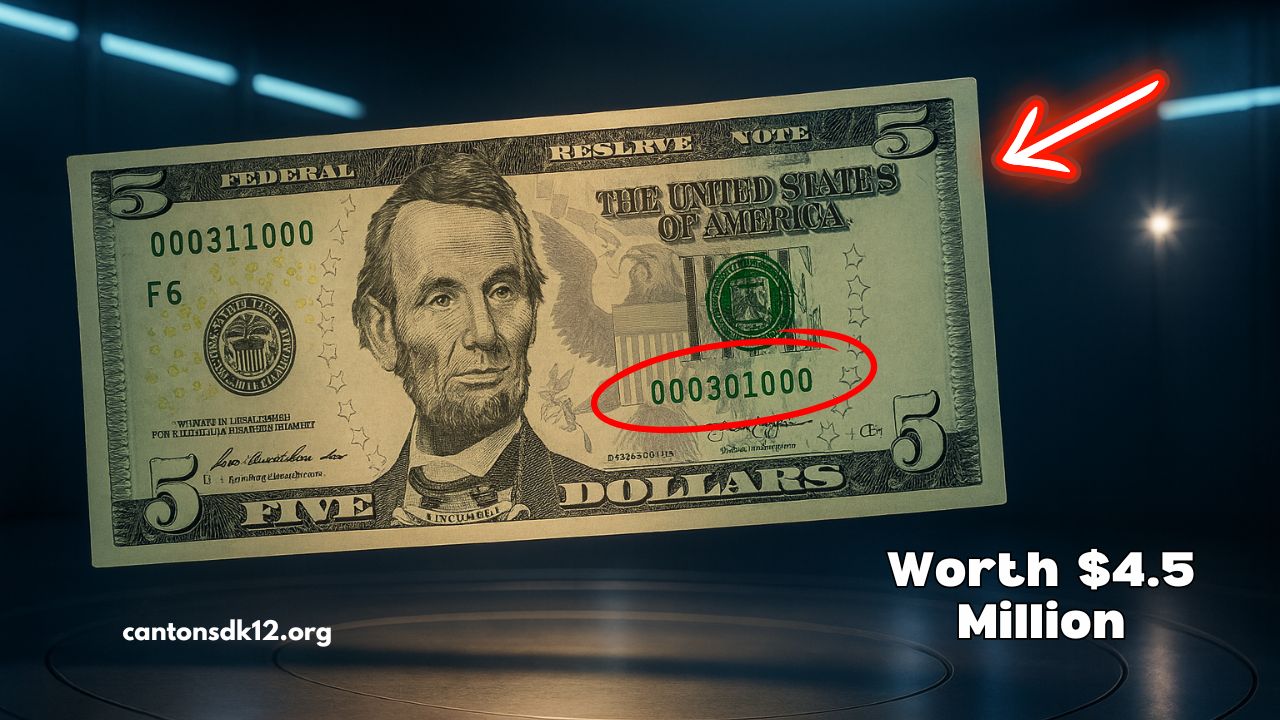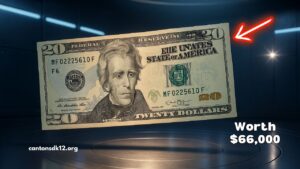What looks like a standard $5 bill tucked in your wallet might actually be a multi-million-dollar treasure—if it bears a special radar serial number like 31000, reportedly valued up to $4.5 million.
Rare banknote serials have unexpectedly become hot attractions in currency collecting circles, and this isn’t the first high-value surprise. Here’s what savvy collectors know—and what you can do to check your own bills.
What Is a Radar Serial Number?
A radar serial number on paper money is a unique kind of palindrome—one that reads identically forward and backward.
For example, “31000-00013” or “4554” are types of palindromic sequences that grab collector attention. Radar serials are revered in fancy serial collecting, one of the few domains where chance and patterns drive value.
Why “Serial 31000” Could Be So Valuable
According to circulating reports, a $5 bill featuring the radar serial number 31000 has potential value reaching $4.5 million. The factors behind this staggering valuation include:
- Extreme Rarity: Combinations like 31000–00013 are exceptionally infrequent.
- Collector Demand: Palindromic or “radar” sequences are highly prized by currency enthusiasts.
- Speculative Hype: Large valuations often reflect excitement and expectations within a niche market.
While most radar serial notes are worth modestly above face value, certain rare sequences—like 31000—can garner six- or seven-figure speculation.
Typical vs. Super Radar Serial Note Values
| Type of Radar Serial | Typical Value (Uncirculated) |
|---|---|
| Standard Radar Serial | Around $20 |
| Super-Rare Radar (e.g., 31000) | Speculative value up to $4.5 million |
| Collector Interest Drivers | Rarity, condition, unique sequence |
Most radar-serial notes sell for around $20, while especially rare or sensational examples can reach astronomic prices.
How to Spot One in Your Wallet
- Check the Serial Number — Glance at both ends of the bill for mirror-style patterns like “3100031000” or other palindromes.
- Consider Condition — Crisp, uncirculated bills are more valuable; folding or damage reduces worth.
- Authenticate with a Dealer — For potentially rare radar notes, professional verification ensures accuracy and confidence.
Even if it doesn’t hit the speculative jackpot, discovering a fun radar serial is still a cool find—and often a niche market draw.
Collector Appeal: Why Radar Notes Captivate
- Mathematical Novelty: Palindromes are rare and visually intriguing.
- Limited Market: Currency collectors actively seek unique serial combinations.
- Story Potential: Every note has a serial tale—personal provenance, mint timing, or quirky metadata.
- Affordable Collecting: Unlike coins or stamps, even rare serial notes can begin with just $20 investments.
Radar bills unite rarity, narrative, and accessibility—making them a fun gateway into currency collecting.
The buzz about a $5 bill with radar serial number 31000 potentially worth $4.5 million highlights the captivating underworld of fancy serial currency collecting.
While most of us won’t strike gold, a simple check of your wallet could unearth something special—even if it’s just a cool $20 radar note or a fun palindromic oddity.
So go ahead: inspect your bills—you might be closer to a collector’s treasure than you think.
FAQs
Are most radar serial note values in the millions?
No. While “super radar” serials like the alleged 31000 combination may draw headlines, typical radar serial notes are valued at around $20 in uncirculated condition.
How can I verify if my bill is a true radar serial?
Compare both ends of the serial and look for a palindrome. For authenticity and valuation, consider having the note evaluated by a professional currency grading service.
Should I treat radar notes as investments?
Only if verified and in excellent condition. Most are novelty items—but the rarest examples can have high collectible value. Always get documentation before considering a sale or auction.


